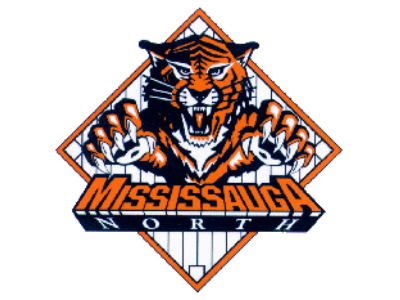APPEARANCE, BEHAVIOUR, ATTITUDE (approach, mannerisms)
Professional Appearance – a clean and tidy appearance helps to ‘sell the call’
Uniform includes: navy blue umpire jersey with or without crest, grey pants, black belt, black shoes (use a pair of your old black school shoes, solid navy blue or black cap, both umpires to use (ball/strike) indicator at lower levels.
Plate Umpire needs to have an indicator, small plate brush, protective supporter and cup, ball bag, chest protector, mask with throat protector ( or catcher style mask) and shin guards. Plate shoes should be designed for safety, including steel toe. The more professional look for shin guards is to wear them under your pants. Typically plate pants with a wider bottom is preferred.
RULES
Know the rules of baseball, know the specific rules of the division you are umpiring, interpret and make the call.
SIGNALS
When to hold the pitcher from pitching, calling play, calling a foul ball, calling time out, when is it a dead ball, calling safe, calling out, pointing a fair ball, calling a strike or ball, strike out, infield fly, foul tip, count, time play, etc.
Mechanics
(Play Coverage) P1, P2, P3, P4
DECISION MAKING
The umpires job is to make calls, and make decisions. Be fair and unbiased in your decisions. Show respect for players and coaches desire to win, but remind them about ‘FUN AND FAIR PLAY’.
When making a call, move into position, STOP and SET, watch the entire play, then make the call. Do not rush your call. ie player drops the ball, or tag with glove and no ball in the glove. Ask to see the ball.
After making a call move a step or two closer to the play.
PREGAME
Arrive at least 15 minutes before game – be visible/notify to coach(s)
Plate meeting with Coaches – Plate umpire takes Control
5 minutes before start of game call the coaches to the plate for the plate meeting. ‘Coaches a few things to discuss’ – and then we will do the field review
Introduce yourself –
"Hi my name is ….” And shake hands
Line Up Cards (if applicable in your division)
Take the Home Team card first , look at it -9 batters, EH, DH, subs
TELL the coaches that ONLY the coaches appearing at the plate conference are allowed to approach or discuss a call. Coaches are instructed to ask for TIME, and then approach the appropriate umpire who made the call. Don't be afraid to refuse if it is a judgement call. Recall though a reasonable question deserves a reasonable response.
Explain - Speed Up - to keep the game moving review use of ‘ courtesy runners (last out for catcher) Number of pitches between innings – 8/5 (all as appropriate)
‘Coaches I want to keep the game moving – tell the players to swing/hit the ball’
Review length of game ie: MERCY, no new inning time limits, darkness, etc
SPECTATORS
Parents and Spectators like to crowd around the diamond /field. Typically they are right behind the plate umpire. Be aware but don't have bunny ears. Recall your training on game management.
Ignore comments (part of the game) unless they are specifically directed to you. Most comments are – ‘whats the count’ . Be vocal with the count. Remember any call you make – plate or base – 50% of the people will not agree. There may be some reactions – don’t take it personally
BALLS AND STRIKES
Watch the ball from pitchers hand to the catchers glove. Move your eyes ONLY . DO NOT MOVE YOUR HEAD. Make proper signals and use your voice. On a STRIKE stand Up - use proper signal and your voice. On a BALL stay down longer and also call BALL (no signal ). Call Strikes and Balls by the number.
Step Back and relax after each pitch.
Go to your umpire position WHEN PITCHER GETS READY TO MAKE A MOTION TO THE PLATE
To prevent ‘whats the count’ from spectators/coaches . Call out the COUNT, and indicate with fingers often and loudly (right hand is strikes).
Pride yourself on getting as many innings completed as possible . Keep the game moving. More at bats for the players, .
Establish your strike zone and be consistent . Let the batters hit . Know the strike zone and worth with it depending on the level to get the players swinging and keeping the games moving.
Between Innings
As an umpire you are on the field for about 2 hours. Make the most of it.
Plate umpire should count the warm up pitches. Tell the catcher when he as ‘2 ‘ more.
Don't hold up the game chatting with your partner between innings. Keep in touch, but don't have the teams waiting on you. Base umpire stands between 1st and 2nd away from warm up throws to first base (in the shallow outfield). Plate umpire should stand on the baseline on the batting team side.
Acknowledge fans, parents, players. Do not chat with them between innings as this can be perceieved as favouritism.
Move the game along.
Do not use your Cell phones while on the field.
visualization
During the game – think ahead, visualize what might happen on the next play. You can train your mind to be more prepared to make the right call. Stay in the game mentally.
errors
Anytime you know you think you may have made a mistake – be professional. The coach may ask you for help from your partner. If appropriate – ie not a judgement call , then take the opportunity. The other umpire should ONLY give an opinion if asked by the other umpire. If talking with your partner umpire, move coach away from conversation and spectators.
If reversing a call – be aware that the other coach will question the reversal – so discuss and be certain. The original umpire who made the call can be the only one to change it.

